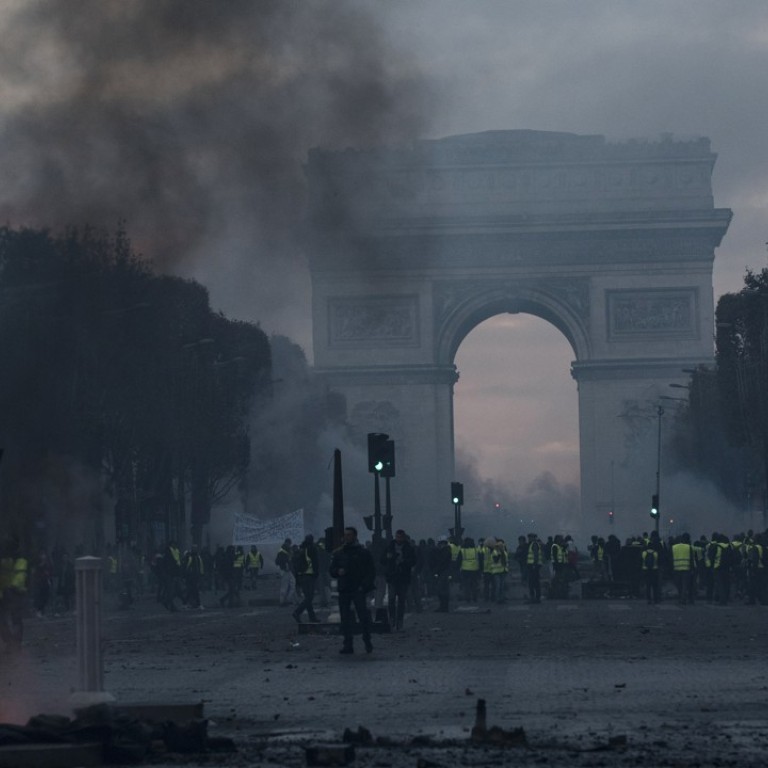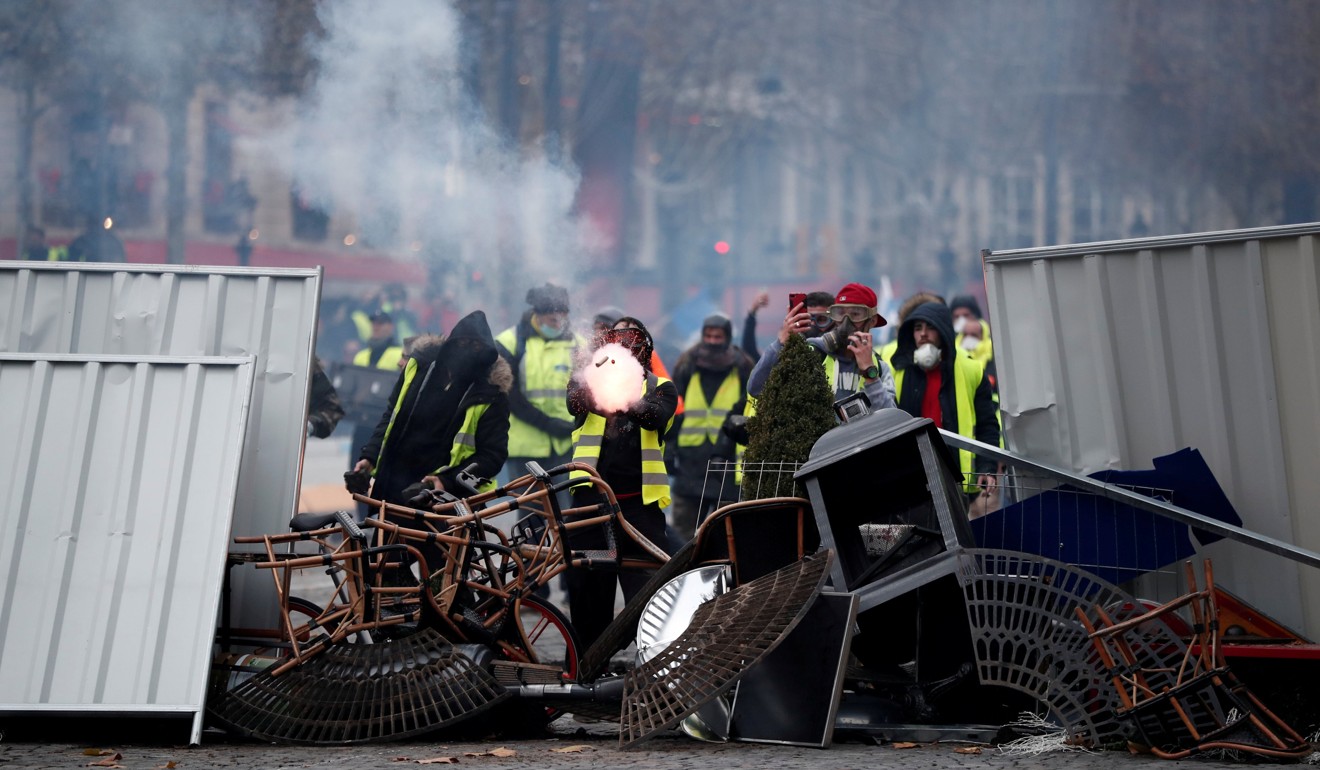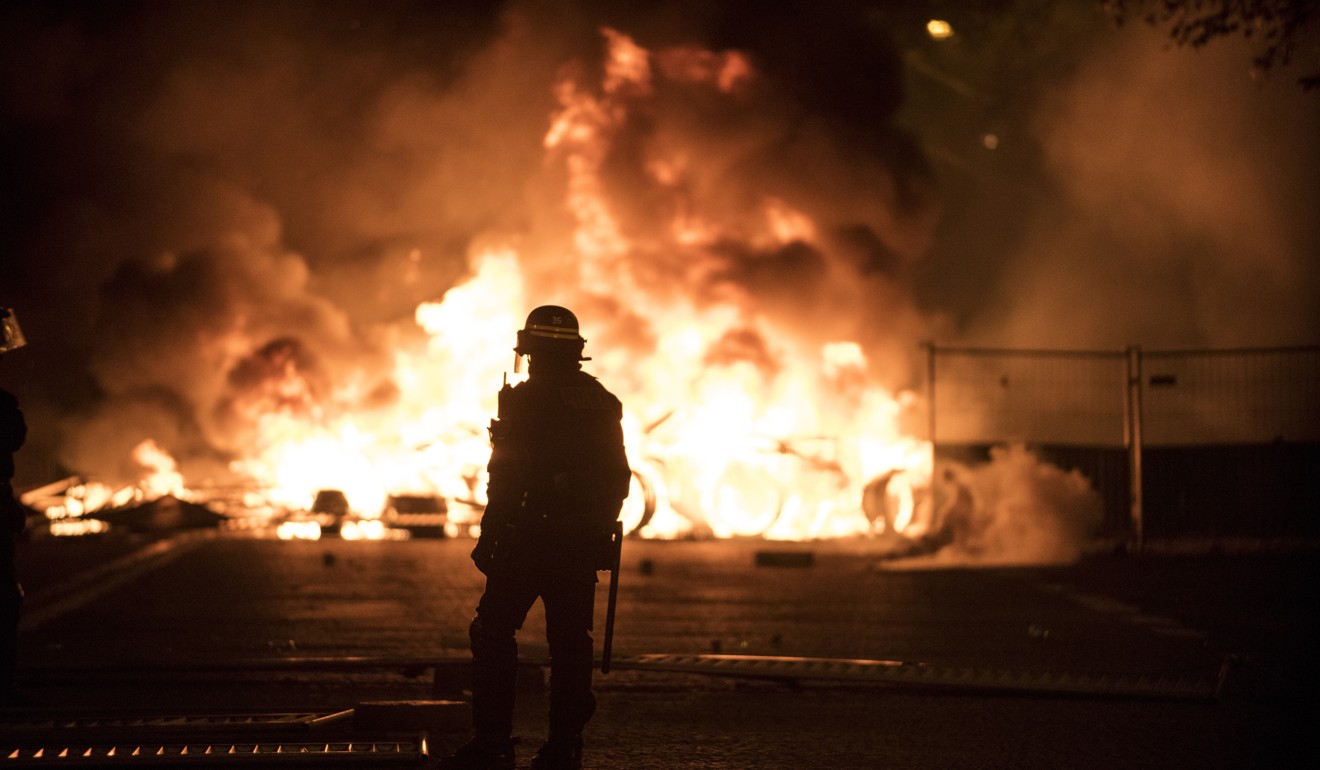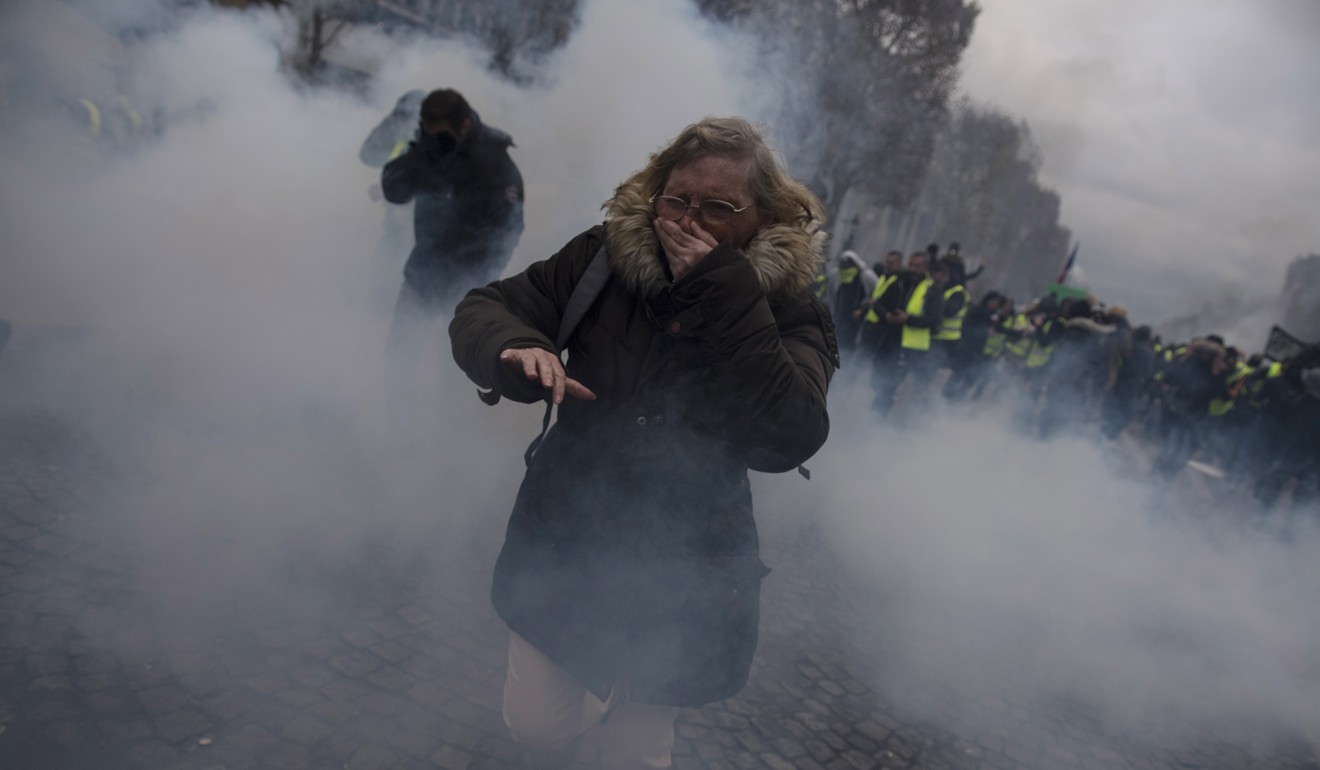
Paris looks like a war zone as angry French revolt over fuel tax
- The famed avenue was speckled with plumes of smoke and neon – owing to the colour of the vests the self-styled ’yellow jacket’ protesters
- The unrest is proving a major challenge for embattled President Emmanuel Macron, who’s suffering in the polls
Anti-government protesters clashed with French police on the Champs-Elysees in Paris on Saturday, leaving the area cloaked in tear gas and smoke from fires on a fresh day of demonstrations against President Emmanuel Macron.
Demonstrators wearing the yellow, high-visibility vests that symbolise their movement threw projectiles at police preventing them from moving along the famed shopping avenue, which was decked out in twinkling Christmas lights.
They also built barricades in some spots, and tore down traffic lights and street signs, creating riotous scenes reminiscent of France’s 1968 civil unrest, or street insurrections in the mid-19th century immortalised in paintings and movies.
Police arrested 130 people, 69 of those in Paris, and 24 people were injured, five of them police officers including one who suffered burns to his groin, the city police department and Interior Minister Christophe Castaner said.
Elsewhere, protesters took over highway toll booths to let traffic pass for free, or held go-slow vehicle processions, underlining one of their core complaints of escalating taxes on car fuel, especially diesel.
Macron, targeted by protesters’ calls that he resign, took to Twitter to thank police.
“Shame” on those who assaulted or intimidated citizens, journalists and politicians, Macron said. “There is no place for violence in the (French) Republic.”
Calm returned to the streets of the capital after midnight on Saturday, with the Champs-Elysees reopening to traffic.
The clean-up operation also got under way as garbage trucks were deployed and workers removed barricades along the famous avenue.
French President Emmanuel Macron says a strong Europe is needed to prevent global ‘chaos’
The violence was on a smaller scale than a week ago when the “yellow vest” movement staged its first nationwide protest.
“We’re not here to beat up cops. We came because we want the government to hear us,” said one protest spokeswoman, Laetitia Dewalle, 37, adding that the largely spontaneous movement denounced “violence by pseudo-protesters” on the fringes.

“We have just demonstrated peacefully, and we were tear-gassed,” said Christophe, 49, who travelled from the Isere region in eastern France with his wife to protest in the capital.
The interior ministry counted 106,000 protesters across France on Saturday, with 8,000 in Paris, of whom around 5,000 were on the Champs-Elysees.
That was far less than the national tally of 282,000 in the November 17 protests.
Castaner said after the tumult died down that damage on the Champs-Elysees was “small”.
The French government cast blame for the unruly protests on far-right politician Marine Le Pen, claiming she egged them on.

But Le Pen rejected that accusation saying she had “never called for any violence whatsoever” and in turn accused the government of “organising the tension” and seeking to make her a scapegoat.
Meanwhile, opposition parties on both the right and left accused the government of trying to reduce the protests to just the sporadic scenes of violence, and turning a deaf ear to the demonstrators’ grievances.
Jean-Luc Melenchon, leader of the radical left France Unbowed party who attended a separate march Saturday protesting violence against women, tweeted that the action on the streets was “a mass protest of the people” which signalled “the end for Castaner”.
A week ago, two people died and over 750 people, including 136 police officers, were injured in sometimes violent demonstrations that have shone a light on frustrations in many rural areas and small towns of France.

The “yellow vests” hail overwhelmingly from non-urban areas of France. They feel overlooked and penalised by policies they see as being pushed through by elitist politicians in Paris.
Former investment banker Macron was elected on a pledge to put more money in workers’ pockets. But the effects of his pro-business reforms on unemployment and purchasing power have been limited so far.
Many of the often low-income “yellow vest” protesters are particularly incensed at his decision to hike anti-pollution taxes on diesel, while scrapping a wealth tax on the rich.
“I’m not just fighting against the price of fuel. It’s about tax, what we pay,” protester Catherine Marguier said near the village of La Gravelle in northwest France.

Meanwhile, in a separate protest in the southern city of Marseille, police fired tear gas at bottle-throwing demonstrators upset by the “gentrification” renovation work on the town’s biggest square. Around 1,200 demonstrators took part and two were arrested.
Revolts against taxes have been a feature of French public life for centuries. Citizens still pay some of the highest in Europe as a percentage of GDP, and fuel-price protests are a common modern occurrence.
Previous rounds pitting the government against drivers took place in 1995, 2000, 2004, and 2008, often when tax increases coincided with high oil prices – as they have this year.
A poll by the Odoxa research group for Le Figaro newspaper last week found that 77 per cent of respondents described it as “justified”.
Additional reporting by Associated Press

.png?itok=arIb17P0)